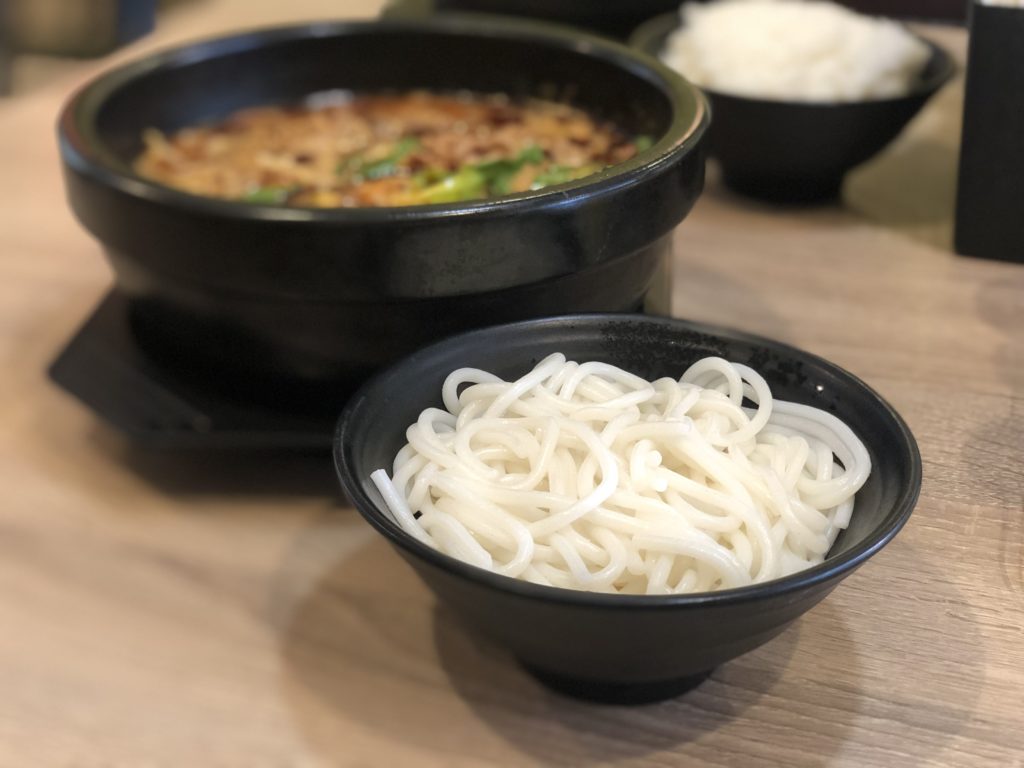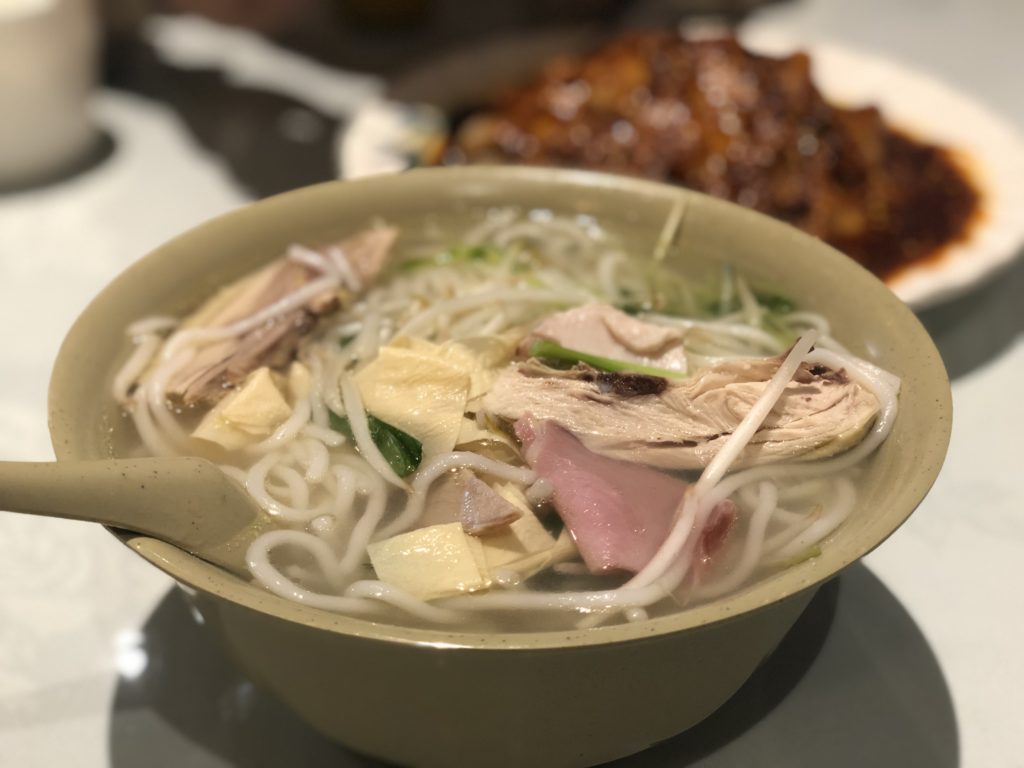By Qianhui Ni
Edited by Natalie Grace Sipula
[4.5 minute read]
What do you normally do before an important exam? In some cultures, people will pray to the god of wisdom, or avoid washing their hair because it is believed to wash the knowledge out of the brain. Some tend to wear clothes with lucky colors. For me, my pre-exam ritual is to have a bowl of crossing-the-bridge rice noodles.

In Yunnan, China, the local people’s diet holds rice noodles to an equal status as rice. Different from rice noodles from other provinces, the traditional Yunnan rice noodles are made of fermented and milled rice. Thus, they have a very slightly sour taste due to the longer fermentation time in the production process. Crossing-the-bridge rice noodles are the most famous cooking method of these noodles. The soup base is stewed with pork ribs, fresh chicken, fresh duck, and Yunnan ham. After simple seasoning, the thick soup must stay boiling and be put into a large, insulated bowl. You can then add fresh fish slices, fresh tenderloin slices, mung bean sprouts, and mushroom slices to the soup individually. My favorite ingredient to add are fresh raw quail eggs. As the raw quail egg touches the soup, the color of the egg white and yolk changes even before they start changing shape in the broth. This is how we magically make a soft boiled egg in a fully intact shape. When I was a little kid, I always wanted to complete this part by myself but was stopped by my parents since the temperature of the soup was too high.
You are probably wondering why this dish is named “crossing-the-bridge” and why it is connected to pre-exam rituals. One well-accepted version of its origin story goes like this: in the Qing Dynasty, a scholar living in southern Yunnan used to go study at a pavilion in the middle of a lake to prepare for the imperial examination. To support him, his wife often made his favorite rice noodles and brought them to the pavilion. Every time she got there, the rice noodles had already become cold. One day, she accidentally found out that the thick layer of chicken fat covering the soup helped it stay at a high temperature. The rice noodles, the meat, and the vegetables actually tasted more refreshing if they were put in right before eating. Since then, she always stewed the soup with chicken and other meat first, and waited until she arrived at the pavilion before putting in the extra thinly sliced ingredients and rice noodles. With her support, the scholar eventually got the highest exam score. Because every time the scholar’s wife needed to walk across a bridge to reach the pavilion, people named this cooking method “crossing-the-bridge rice noodles” in order to commemorate this talented woman. Since then, having a bowl of crossing-the-bridge rice noodles has become a popular pre-exam ritual for many local people.

As part of the cultural heritage of Yunnan, China, crossing-the-bridge rice noodles have become a top cuisine that no visitor to the region should miss out on. Before I went to college, I used to take it for granted because there are so many restaurants that sell it in my hometown. I did not realize how hard it is to find authentic crossing-the-bridge rice noodles until I started my life in another country. However, after visiting almost all the Yunnan restaurants in LA, I found two good ones where you can get a taste of this traditional cuisine:
Yunnan Restaurant:
You can find two Yunnan Restaurants in LA: one is located in San Gabriel, and the other one is in Monterey Park. Here, when ordering crossing-the-bridge rice noodles, you will have the chance to add all of the ingredients to the boiling soup yourself. Apart from the rice noodles, don’t miss the amazing Chinese Salad with different cold meats or vegetables in spicy sauce.

Yunnan Garden:
Located in Hacienda Heights, Yunnan Garden has a more spacious dining area. The crossing-the-bridge rice noodles here are put in a big bowl in which the cook has already put in all the ingredients and rice noodles. The soup base is great and I’m sure you will love it.
If you want to try a new pre-exam ritual before a major exam, try the crossing-the-bridge rice noodles and remember the story of the scholar and the talented wife, and hopefully it will bring you good luck.
Featured Image by Frank Zhang on Unsplash
Qianhui is a doctoral student majoring in Psychology. She received a B.S. in Psychology from East China Normal University in 2019. She is interested in how children learn about social agents and the social world. When she isn’t working in the lab, Qianhui enjoys traveling, reading novels, watching movies, and cooking.



